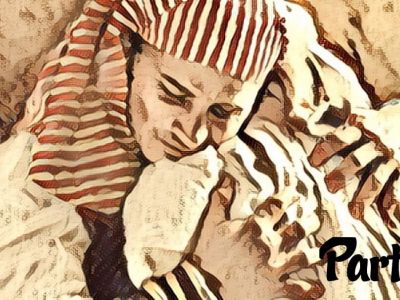Book of Acts – Chapters 3-5
Book of Acts – Chapters 3-5
“Understanding the Book of Acts
From the Original Hebrew Perspective “
by Jim Staley
Introduction
Jim Staley from Passion for Truth Ministries delves into the Book of Acts, aiming to explore its original Hebrew context. He emphasizes the differences between early disciples’ beliefs and traditional Christianity. Pastor Staley highlights the importance of understanding the Hebrew roots to grasp the true foundation of the early church.
Foundation of the Early Church
It is asserted that the early disciples were Jewish and followed Hebrew traditions. The events in Acts occur from AD 30 to around AD 65, a period crucial for setting the foundation of the early church. After Christ’s resurrection, His followers waited in Jerusalem for the Holy Spirit, a concept rooted in Hebrew traditions, particularly the Feast of Shavuot (Pentecost).
Significance of “Those Who Are Afar Off”
A key focus is the phrase “those who are afar off,” which Pastor Staley explains using Isaiah 57:19. This phrase refers to the two kingdoms of Israel: the Northern Kingdom (House of Israel) and the Southern Kingdom (House of Judah). The Northern Kingdom was scattered and assimilated among Gentiles, losing their tribal identity, while the Southern Kingdom retained their identity and returned from Babylonian captivity.
Relevance to the Book of Acts
In Acts 2:39, Peter’s reference to “those who are afar off” indicates the scattered Northern Kingdom. This perspective is crucial for understanding the mindset of the early disciples. Through Ezekiel 11:14-16 and Ephesians 2:11-18, Pastor Staley emphasizes the reunification of the two kingdoms through Christ.
The Role of Ephesians in Understanding Acts
Another aspect of this teaching connects Ephesians 2:11-18 to Acts, highlighting how Paul addresses both Jews and scattered Israelites (those afar off). This passage underscores the breaking down of barriers between the two groups, creating one new man from the two, symbolizing the reunification of Israel.
 The Hour of Prayer
The Hour of Prayer
Acts 3 begins with Peter and John going to the temple at the ninth hour (3 PM), a significant time for prayer and sacrifices in Judaism. Linking this to the time of Jesus’ death, drawing parallels between the crucifixion and the evening sacrifice.
Healing at the Temple Gate
The narrative in Acts 3 continues with the healing of a lame man at the temple gate called Beautiful. Peter heals the man in the name of Jesus Christ, showcasing the power and authority given to the apostles. This miracle draws attention and leads to Peter addressing the onlookers, explaining the fulfillment of prophecies through Jesus.
Peter’s Sermon
Peter’s sermon emphasizes repentance and turning to God. He cites the prophets, reinforcing the message that Jesus is the promised Messiah. Peter calls for repentance, so their sins may be blotted out, and times of refreshing may come from the Lord.
The Arrest of Peter and John
In Acts 4, Peter and John face opposition from the religious authorities. Despite being arrested, they boldly proclaim Jesus’ resurrection. The authorities, unable to deny the miracle, release them with a warning. Peter and John return to their community, and together they pray for boldness.
The Believers’ Prayer
The community’s prayer highlights their unity and reliance on God. They ask for boldness to speak God’s word and for God to continue performing signs and wonders through Jesus’ name. Their prayer is answered, and they are filled with the Holy Spirit, speaking the word of God boldly.
Ananias and Sapphira
Acts 5 introduces Ananias and Sapphira, who deceive the apostles about the sale of their property. Their deceit leads to their deaths, instilling fear and emphasizing the seriousness of honesty and integrity within the community.
Summary
Pastor Staley’s teaching underscores the importance of understanding the Hebrew context of the Book of Acts. He highlights the continuity between the Old and New Testaments and the fulfillment of prophecies through Jesus. The early church, rooted in Jewish traditions, demonstrates the power of the Holy Spirit and the importance of unity, repentance, and boldness in spreading the gospel.













